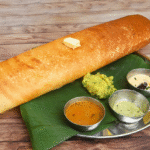Indian cuisine is known worldwide for its bold aromas, vibrant colors, and unforgettable flavors. At the heart of this uniqueness are Indian Spices. They are not just ingredients for taste, but also hold cultural, nutritional, and even medicinal value.
If you have ever looked for spices 101, wanted to understand cooking spices 101, or been curious about a complete list of Indian spices, this guide will give you an authentic look into how spices form the soul of Indian food.
What Makes Indian Spices Unique
Indian spices stand out because of the way they are layered and combined. Unlike simple seasonings, these spices build flavor in stages. They provide more than taste by also influencing the aroma, texture, and even color of the dish.
For example, turmeric not only gives curries their golden hue but also supports immunity. Cumin enhances earthy depth while aiding digestion. Cardamom provides fragrance that uplifts both curries and desserts. These are small details that create the big impact you taste in every Indian meal.
A List of Essential Indian Spices and Their Benefits
Here is a list of Indian spices that every kitchen should know, along with their key benefits:
- Cumin (Jeera): Adds an earthy, nutty flavor. Known for aiding digestion and improving metabolism.
- Turmeric (Haldi): Bright yellow, slightly bitter, and packed with anti-inflammatory and antioxidant properties.
- Coriander (Dhania): Light and citrusy in flavor. It helps regulate blood sugar and promotes digestion.
- Cloves (Laung): Strong, warm spice often added to rice dishes and curries. They support oral health and have antimicrobial benefits.
- Cardamom (Elaichi): Sweet and aromatic. Often used in both savory and sweet dishes and known for aiding digestion and reducing acidity.
- Mustard Seeds (Sarson): Release a nutty, pungent flavor when tempered in oil. They improve metabolism and are a source of selenium.
- Red Chili Powder: Brings heat and a vibrant red color. Rich in vitamins A and C, it boosts immunity and metabolism.
- Black Pepper (Kali Mirch): Adds heat and sharpness. It improves nutrient absorption and supports respiratory health.
- Fenugreek (Methi): Has a slightly bitter taste, often used in curries and breads. Helps manage blood sugar and cholesterol.
- Garam Masala: A blend of Indian spices including cinnamon, cardamom, cumin, and cloves. It adds warmth, depth, and balance at the end of cooking.
This list of Indian spices shows how each one plays a role in taste and health, making them essential in everyday meals.
Cooking Spices 101 | How They Are Used
Cooking with Indian spices is not just about throwing them into a dish. It’s about knowing when and how to use them.
- Tempering (Tadka): Whole spices like cumin or mustard seeds are heated in oil to release their flavor before other ingredients are added.
- Balancing Heat and Aroma: Spicy flavors like chili are balanced with cooling spices like coriander or fennel.
- Layering Flavors: Spices are added at different stages, such as sautéing onions with cumin early on and sprinkling garam masala at the end.
- Highlighting Key Notes: A pinch of cardamom or clove transforms an ordinary dish into something special.
These methods ensure that every meal feels rich, balanced, and aromatic.
How Indian Spice Blends Shape Flavors
Pre-mixed spice blends are a signature part of Indian cooking. Instead of using one spice at a time, blends create harmony and consistency.
- Chaat Masala: Tangy and zesty, used on street snacks and salads.
- Tandoori Masala: Smoky and bold, perfect for grilled dishes.
- Curry Powder: A balanced mix often used for everyday cooking.
These blends bring convenience and depth, making it easier to recreate authentic Indian flavors at home.
Why Spices Are the Foundation of Indian Cuisine
Spices are more than flavor enhancers. They are part of India’s culture and history, shaping not only taste but also health.
For Example:
- Turmeric is considered a natural healer that supports immunity.
- Ginger and garlic are staples for flavor but also fight inflammation.
- Cumin and coriander aid digestion and keep meals lighter on the stomach.
- Cardamom and cloves give aroma and sweetness while promoting digestive health.
This balance of flavor and wellness is why spices are at the foundation of Indian cuisine. They make everyday meals nourishing, flavorful, and memorable.
Conclusion
Understanding spices 101 means appreciating how each spice contributes to the taste, aroma, and health benefits of Indian cuisine. From cumin and turmeric to garam masala and chili powder, every spice has its purpose in building authentic Indian flavors.
At Akaal Sweets & Restaurant, we bring this tradition to life through our dishes. Whether you are exploring classic curries, street-style snacks, or traditional sweets, our food showcases the magic of Indian spices. Visit us in Mississauga and experience authentic flavors crafted with care and tradition.
Frequently Asked Questions
What are the most important Indian spices?
Cumin, turmeric, coriander, cardamom, cloves, and mustard seeds are among the essentials in Indian cooking.
Which spice gives Indian curries their yellow color?
Turmeric is responsible for the golden color and also offers health benefits.
Are Indian dishes always very spicy?
Not necessarily. Spice levels can be adjusted from mild to extra hot based on preference.
What is garam masala?
It is a traditional blend of Indian spices like cinnamon, cumin, cardamom, and cloves added toward the end of cooking for aroma and depth.
Do Indian spices have health benefits?
Yes, many are known for medicinal properties such as aiding digestion, boosting immunity, and reducing inflammation.



